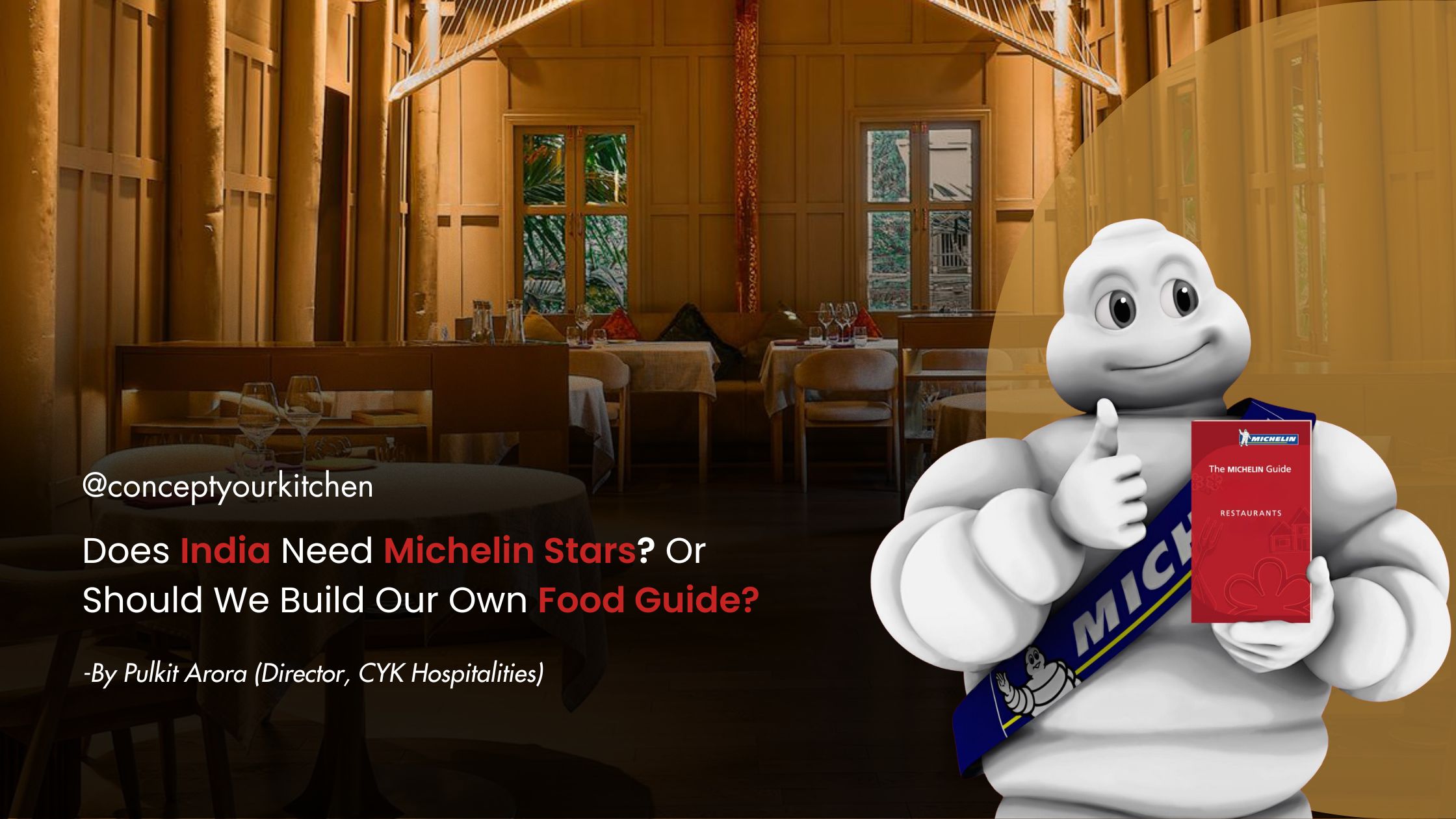
21 Apr Does India Need Michelin Stars? Or Should We Build Our Own Food Guide?
India’s culinary landscape is a world in itself—layered, diverse, and deeply rooted in regional traditions. From the spice-laden kitchens of Kerala to the delicate flavors of Kashmiri wazwan, Indian food tells countless stories. Yet, despite this unmatched variety, the Michelin Guide—the gold standard in global culinary recognition—has never officially reviewed or rated restaurants within India.
Interestingly, Indian chefs such as Chef Vikas Khanna, Chef Gaggan Anand, Chef Atul Kochhar, and the first-ever woman from India, Chef Garima Arora, have all earned Michelin stars, but only for their restaurants abroad. Their brilliance was acknowledged on foreign soil, not within the country that shaped their culinary identity. This brings us to a core dilemma: Does India need validation from the Michelin system, or should it build its recognition platform—one that truly understands and honors the essence of Indian cuisine?
To answer that, we must first understand what the Michelin star system stands for. Introduced in 1900 by the French tire company Michelin, the guide was initially created to encourage road travel and, in turn, tire sales. Over the decades, it evolved into the world’s most prestigious restaurant rating guide. Anonymous inspectors evaluate restaurants based on ingredient quality, mastery of cooking techniques, value for money, and consistency. A three-star rating denotes an establishment “worth a special journey,” often turning chefs into global celebrities.
But despite India’s vast culinary potential, Michelin has not established a guide here. There are multiple reasons for this. Logistically, India’s diverse geography and cuisine pose a challenge to standardised evaluation. Moreover, Michelin’s traditional framework—refined service, presentation, and ambiance—doesn’t always align with how food is consumed in India. Our best meals are often had in family homes, temple kitchens, or roadside stalls, none of which fit Michelin’s formal dining mold. There’s also a commercial aspect—India may not yet offer the kind of return on investment the guide seeks when expanding into new regions.
Still, the argument in favour of Michelin’s presence in India holds weight. Global recognition often pushes standards higher. If top-tier restaurants across Indian metros were rated and reviewed by Michelin, it could encourage elevated service benchmarks and better training and possibly even attract culinary tourism. It might also give Indian chefs working within the country the same platform their global peers enjoy.
But perhaps a more meaningful and culturally aligned approach lies in creating India’s own food guide—one that reflects the country’s complex relationship with food. Such a guide could go far beyond just fine dining. It could celebrate heritage kitchens that have been preserving family recipes for centuries, spotlight street food vendors whose ₹30 dishes are bursting with innovation, and acknowledge the contributions of home chefs who are redefining local entrepreneurship.
It could also pay tribute to modern Indian restaurants that blend technique with tradition, or to culinary custodians who preserve food rituals, temple offerings, and festival feasts rooted in history. A uniquely Indian guide wouldn’t just rate food—it would tell the stories behind it. It would explain why certain dishes are cooked on certain days, how climate and season influence menus, and why a simple halwa at a gurdwara can hold more meaning than a plated dessert in a five-star hotel.
The truth is, Indian cuisine doesn’t always fit into the European fine-dining lens. Our food is more than a transaction—it’s a cultural experience, a family affair, a community offering. While the Michelin star system represents precision and global acclaim, an Indian food guide could reflect depth, emotion, and authenticity.
In a world increasingly looking toward India for inspiration—be it fashion, cinema, or wellness—it’s only fitting that our food too be celebrated on our own terms. Whether Michelin eventually enters India or not, the time is ripe for a homegrown, thoughtful, and inclusive food guide that defines culinary excellence through an Indian lens.



No Comments